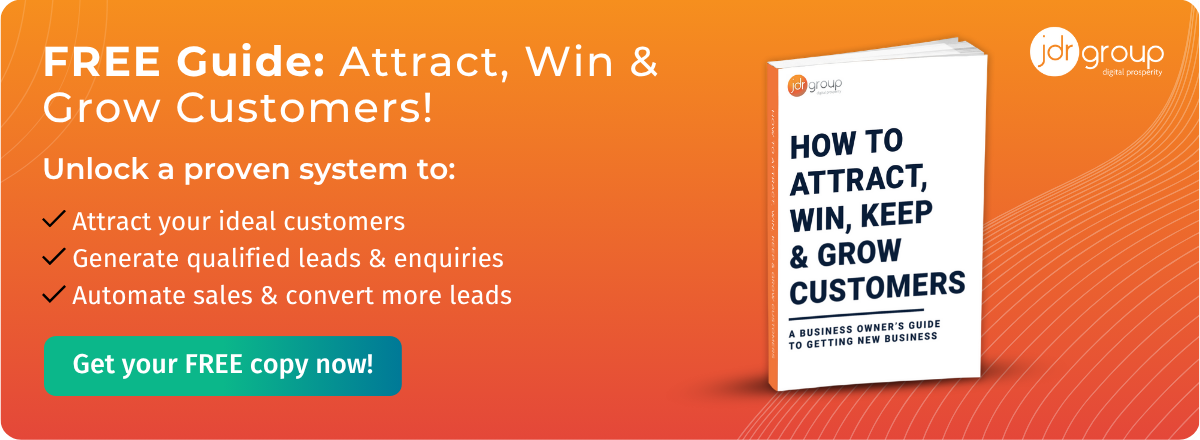Why a High-Quality Customer Database Is The Key To Getting More Sales

A lot of discussions about marketing and sales revolve around the quality of your content how great your flyer is, how good your website is, how attractive that special offer could be and this is definitely important, but the very first place to start, and the key to getting more sales, is having a high-quality list of prequalified prospective customers.
By starting with your marketing material and hoping someone will like it, you are actually attempting the process in reverse. What you actually need to do is to understand your target market, what your real-world customers want from your company, and create marketing content that addresses these needs. If you get this angle right, your efforts will be rewarded by a steady flow of relevant, prequalified leads, which form the basis of a high-quality customer database.
What do we mean by quality?
When we talk about quality, in terms of lead generation, what we really mean is the likelihood of converting these leads into sales, the value of these potential sales, and the effort you have to put into customer acquisition.
Scenario #1: The quality list would be one populated by people who are suspects without any identified interest in your products and services, or any means of affording them. You could create the best marketing content in the world, but your results from using this list would be zero a colossal waste of time for you and your team, and worse, you would probably get reported for spam. (Many of the old fashioned cold databases, you used to be able to buy, fell into this category.)
Scenario #2: At the opposite end of the spectrum is the highest quality list, whose contacts (and they would all be opted in) are positively falling over themselves to sign up for your products and services. They will have a full understanding of what you do and how it addresses their particular challenges, they have the money to invest, they understand the value of your service, and they are ready to buy straight away. Perfect customers, dream customers. Your acquisition costs from using such a list would be extremely low, and your return on investment from marketing is very high indeed.
What makes up a customer list?
Most lists, in practice, fall somewhere between these extremes on a sliding scale, with contacts who are more or less interested, and more or less in a position to actually become paying customers. Not all leads will be at the same stage of the buyer journey:
- Some will be your current paying customers,
- Some will be lapsed or former customers and,
- Some will be non-converted leads at various stages of their decision-making process.
Of this third group, some may have had an official quote or proposal from you, and others may have joined your customer list as part of a simple sussing out process while they gain more awareness of the types of products and services offered by you and your competitors, while others still will be actively looking for a supplier.
Lead nurturing - building trust and authority
Most people, new to your list, will have an understandable low level of trust in your business, and not much knowledge or appreciation for what you can do for them. It is your job to take this raw material and nurture it into a customer database that looks more like scenario two than it does scenario one, and clearly, each type of contact, or segment, requires different treatment to get them there. The messages and approaches that might work to attract lapsed customers back to the fold could alienate or irritate your current customers, and be meaningless to non-converted leads.
How to use content to improve your customer list
You raise the quality of your list through a marketing or content strategy that addresses the specific needs of buyers at different stages of knowledge and awareness and progressively moves them towards the position where they are ready to make a purchase.
Taking this approach saves you time and money because you are not wasting valuable sales time on people who are either not interested or not ready to buy. Rather, you are providing leads with the information they need (blog posts, guides, brochures, and so on), and when they are ready to progress to the next stage, they will let you know. This is the inbound marketing approach, as opposed to the outbound, cold calling approach. You leave it in the customer's hands to make all the actual moves, while plotting their journey through carefully considered content.
Next steps
The first stage of improving the quality of your customer list, and thereby lowering your cost per acquisition and increasing your win rate, is a thorough analysis of the contacts that constitute your list. Some may need to be updated or deleted altogether, and the list may need thorough reorganisation and re-segmentation.
Once you have done this, you can create bespoke content strategies that address the buyer concerns of each group. Using marketing automation or an email marketing platform, you can then drip feed relevant content to each group, with successive content deliveries triggered by how the lead responds to each communication.
Image source: Unsplash


